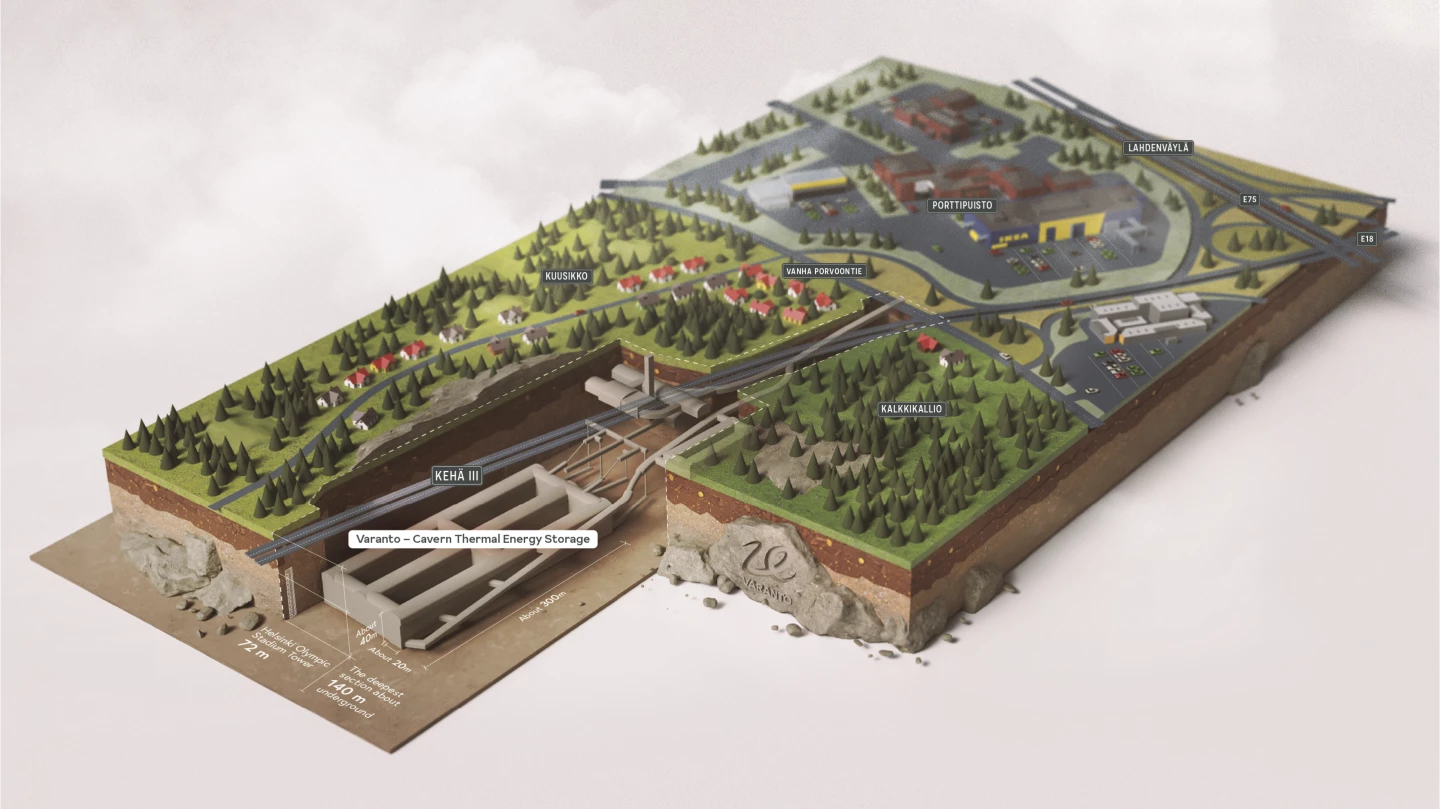An energy supplier in Finland has announced the upcoming construction of an underground seasonal thermal energy storage facility about the size of two Madison Square Gardens that could meet the heating demands of a medium-sized city for up to a year.
Though renewable energy systems play an important part in the supply matrix, the wind doesn't always blow and long days of sunshine are not guaranteed. We've seen a number of energy storage solutions being proposed to deal with the intermittent nature of such setups over the years, including a hibernating battery, rechargeable aluminum, and an industrial-scale sand battery.
"The world is undergoing a huge energy transition," said Vantaan Energia's CEO, Jukka Toivonen. "Wind and solar power have become vital technologies in the transition from fossil fuels to clean energy. The biggest challenge of the energy transition so far has been the inability to store these intermittent forms of energy for later use. "Unfortunately, small-scale storage solutions, such as batteries or accumulators, are not sufficient; large, industrial-scale storage solutions are needed."
The company's solution for the city of Vantaa in the south of Finland is to construct huge underground caverns to store thermal energy, which can then be pumped to homes and business via an existing district heating network when needed.
The project has a total volume of 1.1 million cubic meters (38.85 million cubic feet), including processing facilities, and will be built into the city's bedrock at around 100 m (330 ft) below ground – though the deepest parts of the setup could go down as far as 140 m. Three caverns will be created, each measuring 300 m (984.25 ft) in length, 40 m (131.2 ft) in height and 20 m (65.6 ft) in width.
These will be filled with hot water by a pair of 60-MW electric boilers, powered by renewables when it's cheap to do so. Pressure within the space allows for temperatures to get as high as 140 °C (284 °F) without the water boiling over or steaming away. Waste heat from industry will also feed the setup, with a smart control system balancing energy sources.
The Varanto facility is reported to have a total thermal capacity of 90 GWh when "fully charged" – enough to meet the year-round domestic heating needs of a "medium-sized Finnish city."

The majority of the homes in Finland's fourth most populated municipality are hooked up to the city's 600-km-plus (373-mile) underground district heating network, where hot water is pumped through a closed two-pipe system and into heat exchangers at each building. Once the heat transfer has taken place, the cooled water is then piped back to the production plant and reheated so the cycle can begin again.
The Nordic country is reported to be the largest producer of district heating in the region – in relation to population – and generated some 37.3 terawatt-hours in 2023, with more than half sourced from renewables and 14% coming from waste heat.
In Vantaa, a waste-to-energy plant that burns a mix of non-recyclable domestic and commercial/industrial waste, plus the wood-fueled Martinlaasko Power Plant, are responsible for providing the heat for the local network at the moment. A high-temperature incineration plant that can take in hazardous waste will come online next year.
The Varanto seasonal thermal energy storage facility is expected to enter the mix from 2028, with construction of the entrance due to start in a few months from now. Though reported to enable "cost-effective storage of renewable energy and waste heat on an industrial scale," actual figures or estimates are yet to be revealed.
Vantaan Energia estimates the build cost to come in at 200 million euros, with the Finnish Ministry of Economic Affairs and Employment already topping up the project pot with a grant of €19 million. The video below gives a brief overview.
Source: Vantaan Energia






